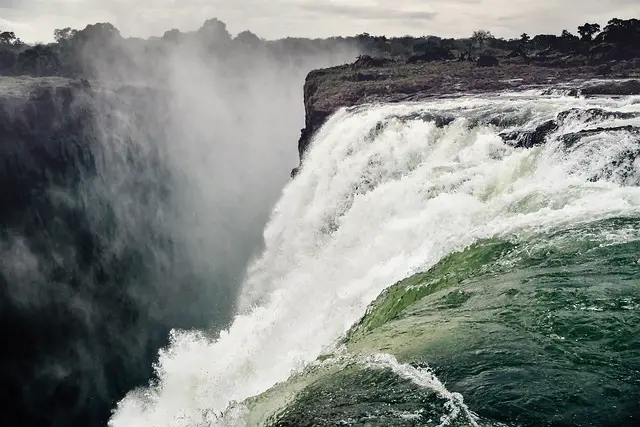💪 Support independent web, support us:
You can also take a dip in the Devil’s Pool, located on the edge of the falls.
Also, don’t miss the opportunity to witness the falls during sunset or sunrise.
2. Great Zimbabwe Ruins
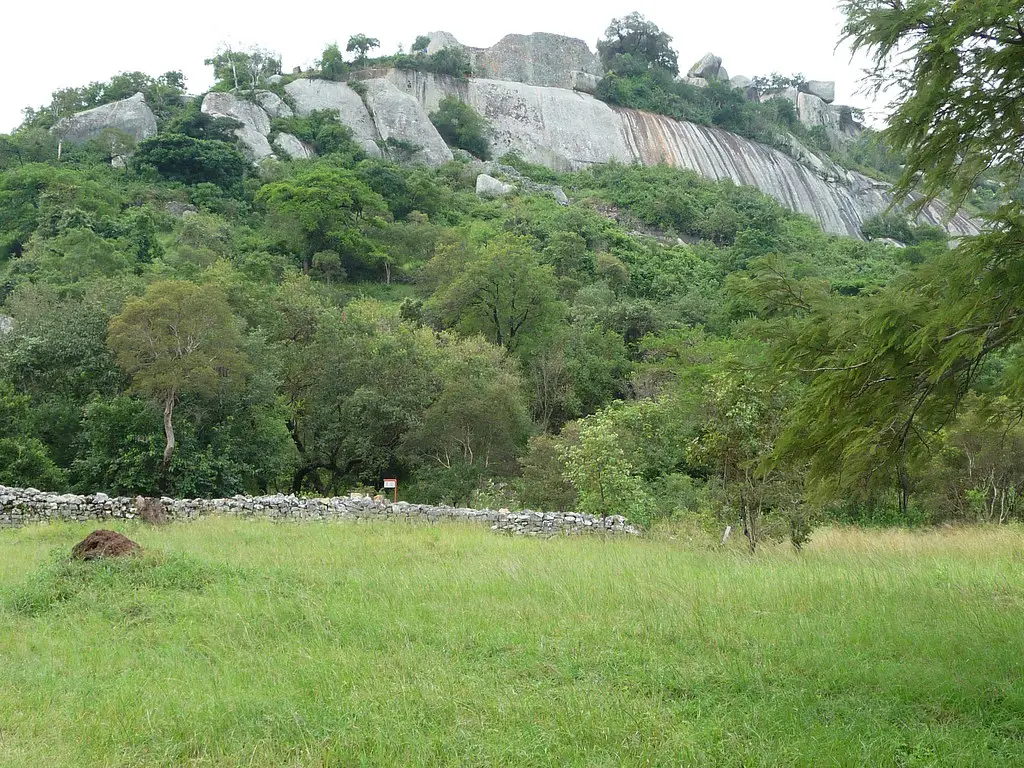
The Great Zimbabwe Ruins is an ancient city located in southeastern Zimbabwe, believed to have been built during the 11th century by the Shona people.
What to see or do: Explore the three main archaeological sites, including the Hill Complex, the Great Enclosure, and the Valley Complex. Admire the intricate stonework and the impressive architecture of the ancient city.
Don’t miss: Witness the magnificent view of the surrounding landscape from the top of the Hill Complex. Learn the history and significance of Great Zimbabwe at the museum.
Insider travel tips: Visit early in the morning or late in the afternoon to avoid the crowds and the heat. Wear comfortable shoes and bring along sunscreen and water.
Hire a local guide for an in-depth understanding of the ruins’ history and culture.
3. Hwange National Park
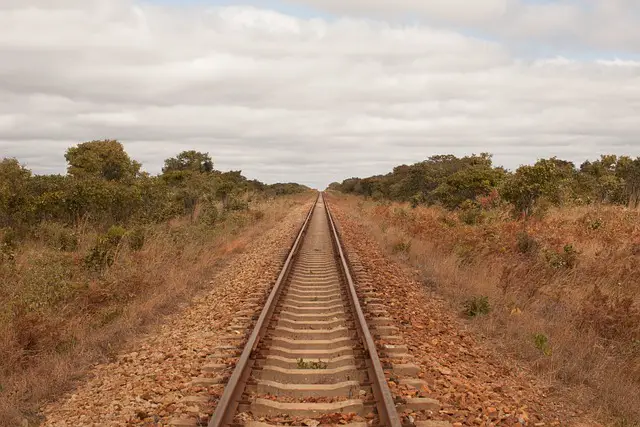
Hwange National Park is the largest natural reserve in Zimbabwe, spanning over 14,000 square miles and home to a diverse range of wildlife.
What to see or do: Visitors can go on game drives and spot creatures ranging from lions and elephants to giraffes and zebras. The park also offers guided walking tours for a more up-close and personal wildlife experience.
Don’t miss: Don’t miss the opportunity to see Hwange’s famous elephant herds – some of the largest in the world!
Insider travel tips: – If you’re a bird-lover, bring your binoculars – Hwange is home to over 400 bird species.
4. Matobo National Park
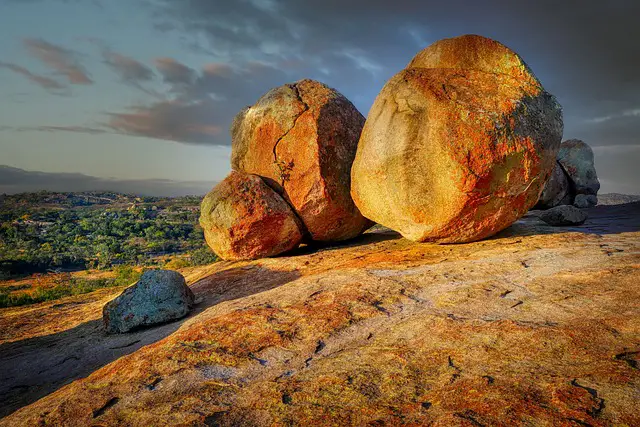
Matobo National Park is a protected area in Zimbabwe that covers over 44,500 hectares of land, featuring unique rock formations, stunning landscapes, and diverse wildlife.
What to see or do:
Don’t miss:
Insider travel tips: – Bring warm clothing, as the temperatures in the park can drop significantly at night.
5. Mana Pools National Park
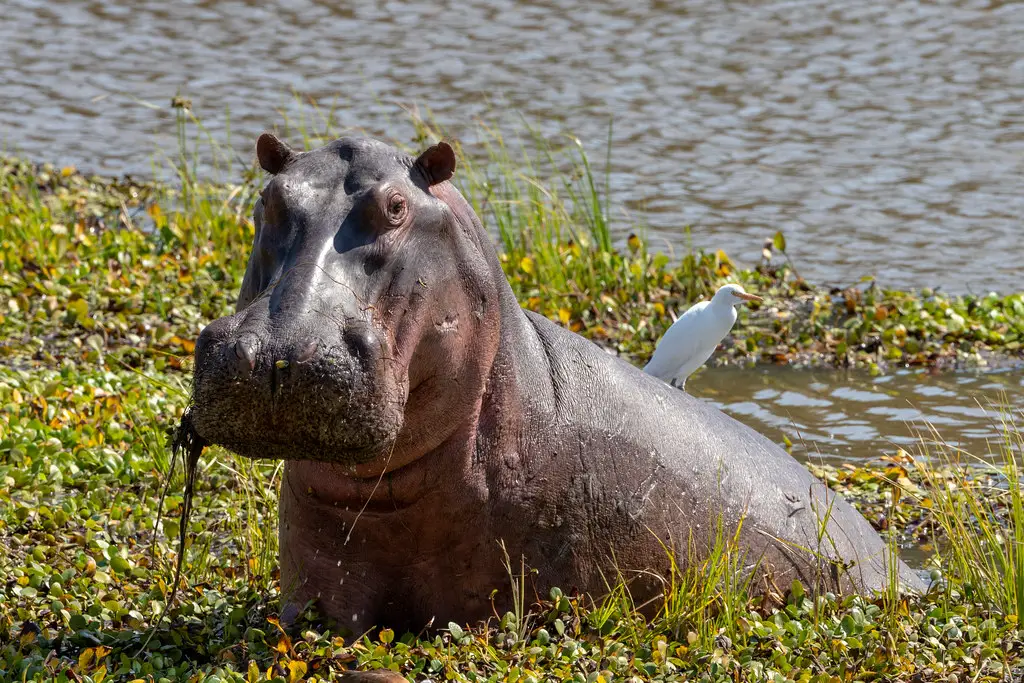
Mana Pools National Park is a wildlife conservation area located in northern Zimbabwe, known for its breathtaking scenery and diverse animal species.
What to see or do: Visitors can enjoy a range of activities, including game drives, walking safaris, birdwatching, and canoeing on the Zambezi River. The park is home to an array of wildlife, including elephants, lions, leopards, hippos, and crocodiles, among others.
Don’t miss: Make sure to take a guided walking safari to experience the park from a different perspective and get up close and personal with the animals.
Don’t miss the chance to see the majestic elephants of the park, who are known for their relaxed and peaceful demeanor.
Insider travel tips: The best time to visit the park is during the dry season, from June to October, when wildlife congregates around the river and is easier to spot.
Be sure to hire a professional guide, who can lead you safely through the park and provide insider knowledge about the flora and fauna of the area.
6. Harare Gardens
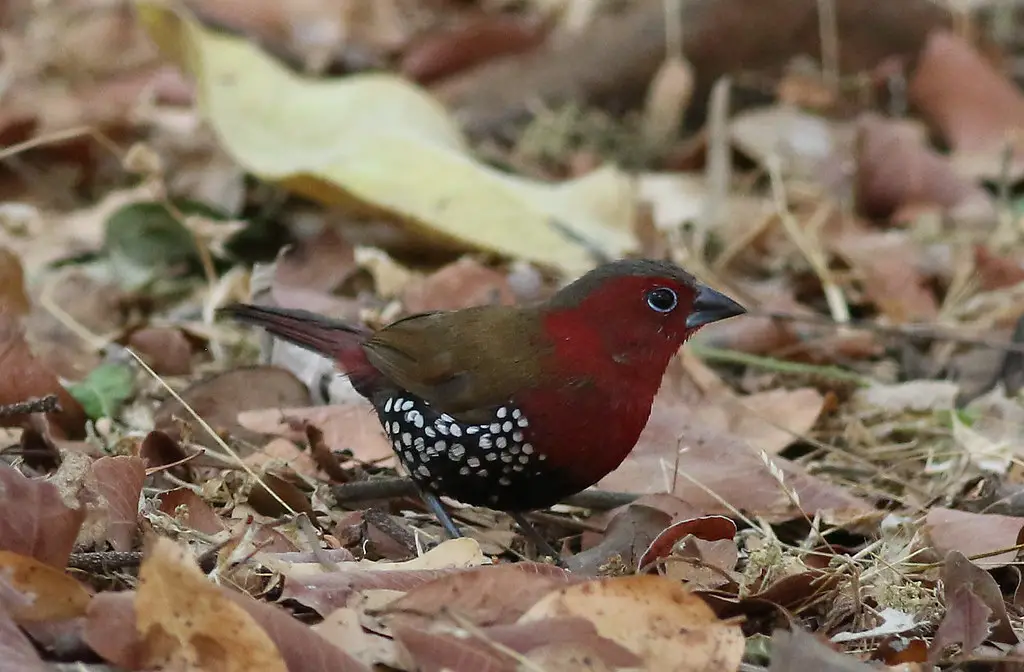
A public park located in the heart of Harare, the capital city of Zimbabwe.
What to see or do: Harare Gardens is the perfect spot for a picnic with its well-manicured lawns and shady trees. Visitors can also enjoy a scenic walk through the garden’s various paths and admire the ornamental plants and flowers.
The park also offers a playground for children as well as a small lake where people can relax and enjoy the serene atmosphere.
Don’t miss: The bird sanctuary which is home to over 40 species of birds including kingfishers, weavers, and sunbirds. Visitors can also catch a glimpse of the majestic African Fish Eagle which is a rare sight.
Insider travel tips: – Visit in springtime when the flowers are in full bloom and the weather is mild.
7. Lake Kariba
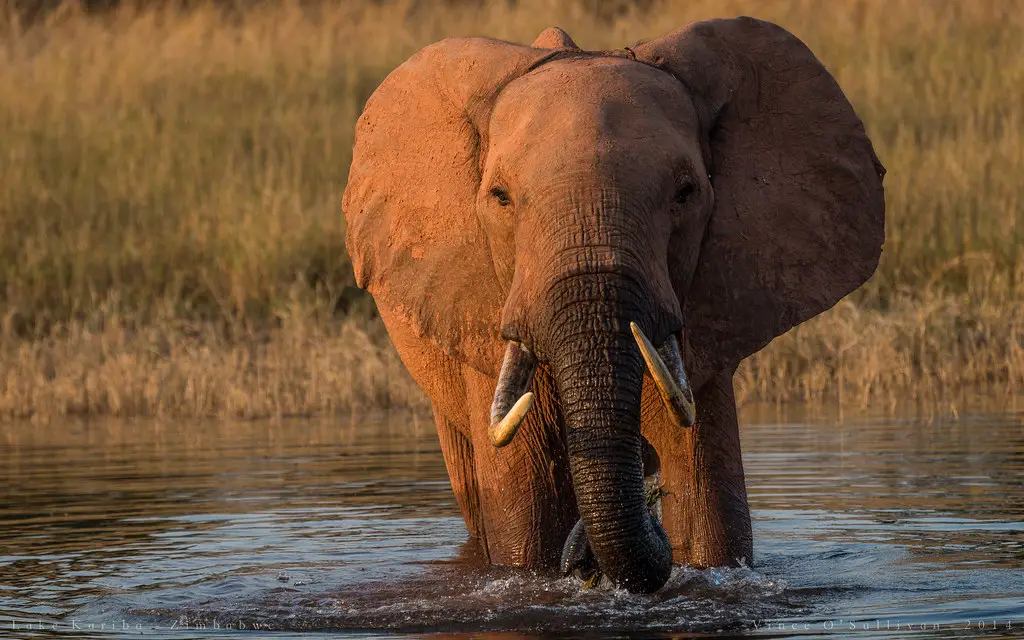
Lake Kariba is a man-made lake located on the border of Zambia and Zimbabwe, spanning over 5,500 square kilometers.
What to see or do: The lake offers numerous opportunities for water activities such as fishing, boating, and water sports. Take a sunset cruise or a ferry ride to explore the lake and its wildlife.
Other activities include game safaris in Matusadona National Park, cultural tours to Tonga villages, and hiking in nearby hills.
Don’t miss: A visit to Kariba Dam, one of the largest dams in the world, which created the lake. Also, don’t miss the chance to watch breathtaking sunsets over the lake.
Insider travel tips: Plan your trip during the dry season (from May to October) for the best wildlife viewing opportunities. Mosquitoes can be a nuisance, so bring insect repellent.
Lastly, check with your tour operator on the latest information regarding safety and security in the area.
8. Gonarezhou National Park
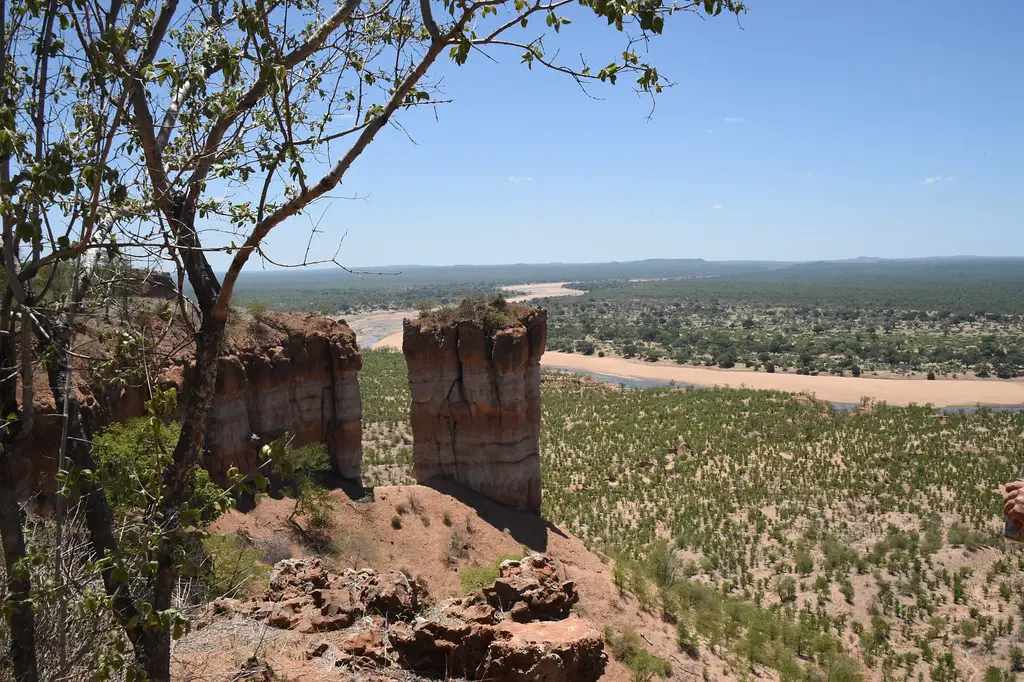
Gonarezhou National Park is a protected wildlife area located in southeastern Zimbabwe, covering nearly 5,000 square kilometers of pristine wilderness.
What to see or do: – Spot the Big Five (lions, leopards, elephants, buffalos, and rhinos) on game drives and guided walks.
Don’t miss: – Taking a guided walking safari to see the park’s incredible wildlife up close.
Insider travel tips: – Visit during the dry season (May to October) for the best wildlife viewing opportunities.
9. Chinhoyi Caves
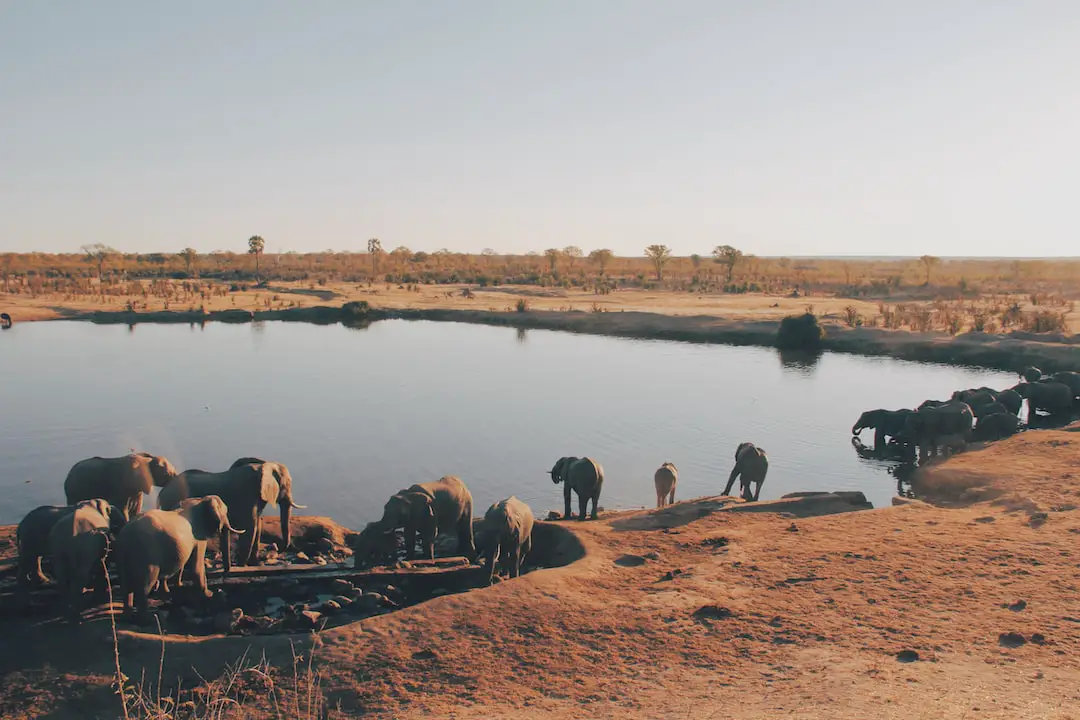
Chinhoyi Caves is a network of limestone and dolomite caves situated in Chinhoyi town, Zimbabwe.
What to see or do: The caves offer a unique experience to explore the underground water system.
You can take a tour of the caves, dive or swim in the crystal clear blue pool, known as the Sleeping Pool.
Don’t miss: Don’t miss the view of the Sleeping Pool from the Darkness Cave, which is a 30-meter-deep cave with stalactites and stalagmites.
Insider travel tips: – Wear comfortable shoes and warm clothing as it is cooler inside the caves.
10. Nyanga National Park
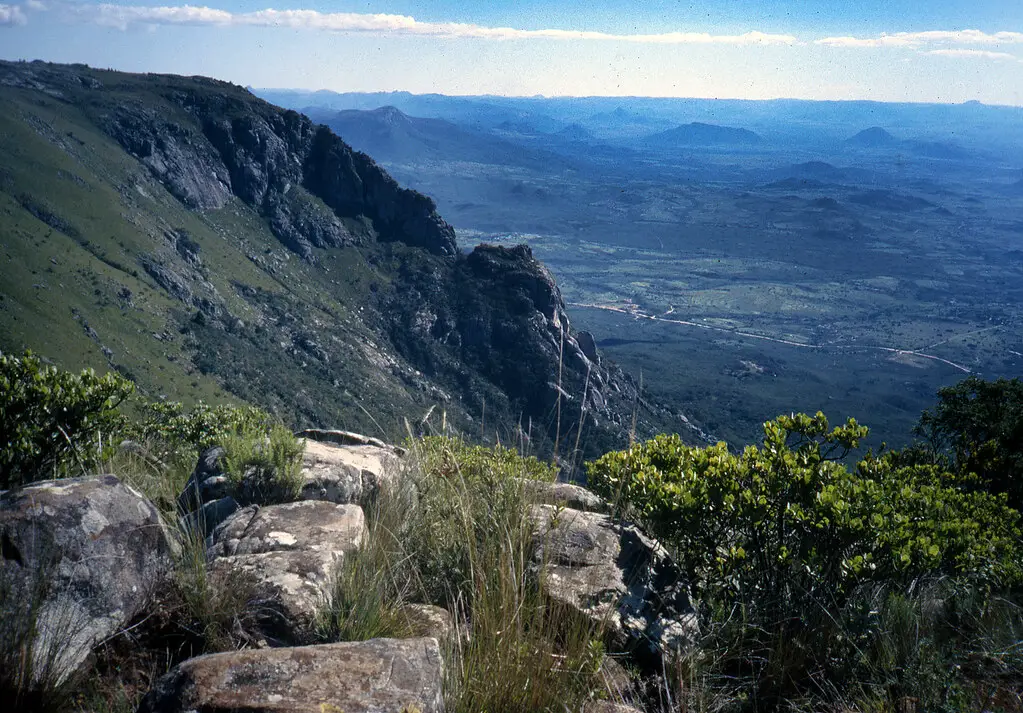
Nyanga National Park is Zimbabwe’s oldest and most visited national park, covering an area of 47,000 hectares in the Eastern Highlands.
What to see or do: Visitors can go on scenic hikes, mountain bike rides, horse riding and fishing.
There are numerous waterfalls, including the stunning Nyangombe Falls and World’s View, which offers panoramic views of the park and beyond.
Don’t miss: The beautiful Pungwe Falls, a 20-meter drop into a narrow gorge surrounded by lush vegetation.
The Rhodes Museum, which offers insight into the life of Cecil Rhodes, who was a significant figure in the colonial history of Zimbabwe.
Insider travel tips: Visit during the summer months of November to April for the best weather conditions. Bring warm clothing for the evenings as temperatures can drop significantly.
Hire a local guide for hiking and wildlife viewing, as they’ll be able to give insight into the flora and fauna of the park.
11. Epworth Balancing Rocks
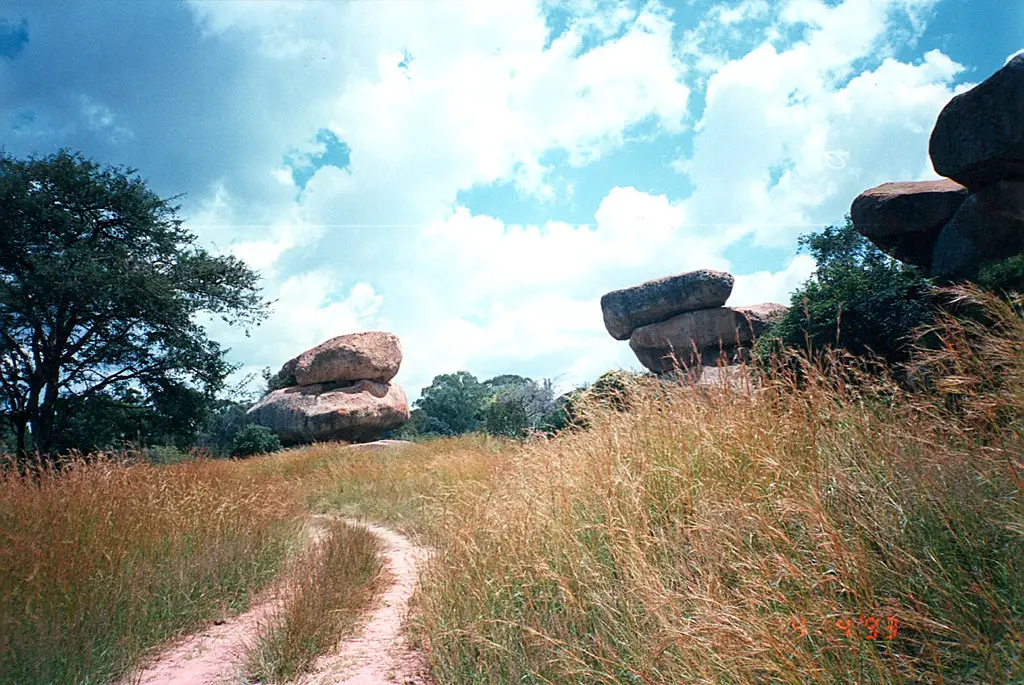
A natural rock formation located in Epworth, Zimbabwe.
What to see or do: Marvel at the unique balancing rocks that seem to defy gravity. The rocks are made of granite and are believed to have been formed over 2 billion years ago.
Don’t miss: The opportunity to take stunning photos of the balancing rocks against the backdrop of the scenic landscape.
Insider travel tips: Wear comfortable shoes suitable for walking on rocky terrain. It’s also advisable to visit early in the morning or late in the afternoon to avoid extreme heat.
Be sure to bring water and sunscreen as well.
12. Kuimba Shiri Bird Park
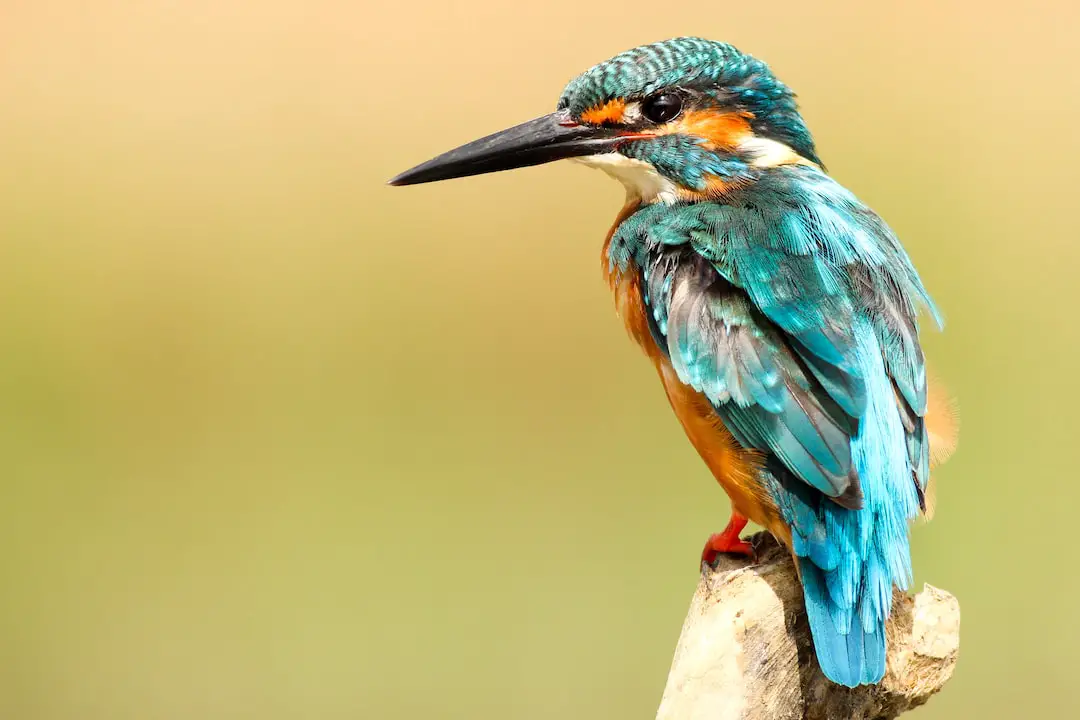
Kuimba Shiri Bird Park is a bird sanctuary located in the heart of Zimbabwe.
What to see or do: The park is home to over 400 birds from 80 different species. Visitors can marvel at the diverse range of birds including eagles, vultures, owls, and parrots.
The park offers bird shows and educational tours to learn more about the birds and their habitats.
Don’t miss: Don’t miss the opportunity to see the African Fish Eagle, one of Zimbabwe’s national symbols, in action. Visitors can watch the eagle swoop down into the lake to catch its prey.
Insider travel tips: The park offers a restaurant and picnic area to enjoy a meal while surrounded by the beautiful birds.
13. Khami Ruins
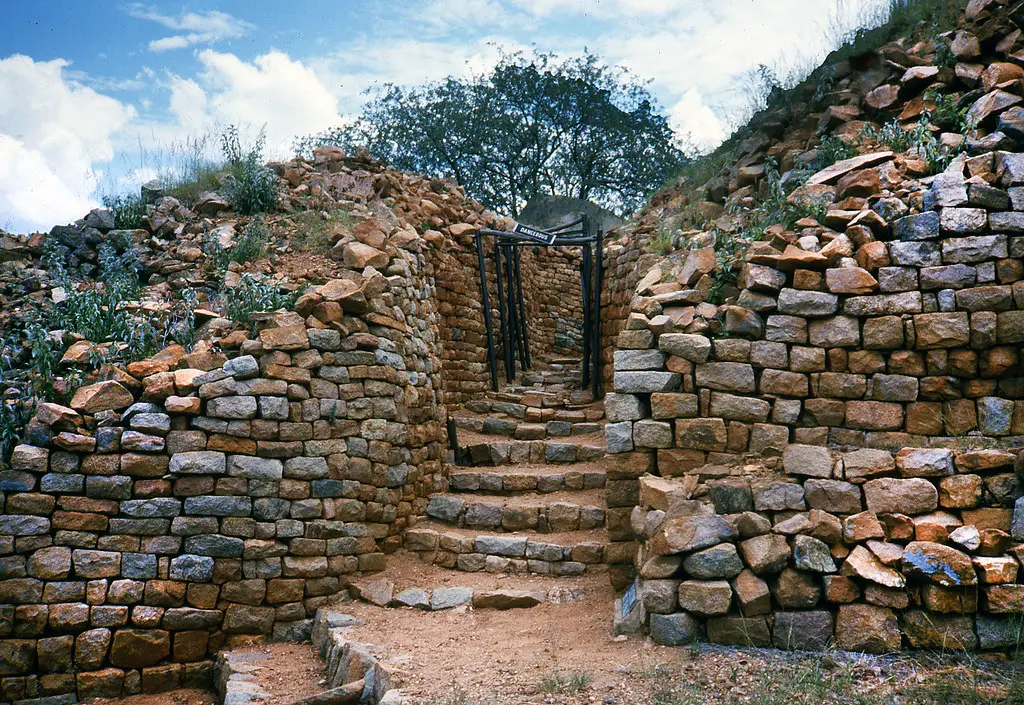
A historical site in Zimbabwe that was once the capital of the Kingdom of Butua in the 15th century.
What to see or do: Explore the well-preserved ruins and learn about the history of the Kingdom of Butua. See the Great Enclosure, which features impressive stonework, and other structures such as the King’s residence and the hill complex.
Don’t miss: The impressive stone walls and intricate designs at the Great Enclosure, which served as the royal palace.
Also, check out the western valley, where you can climb on top of the hill complex for impressive views of the surrounding area.
Insider travel tips: Make sure to bring sunscreen and plenty of water, as the site can be hot and dry. You can hire guides at the entrance who can provide in-depth knowledge about the site’s history and features.
It’s also recommended to visit in the morning or late afternoon to avoid the midday heat.
14. Balancing Rocks

Balancing Rocks refer to geological formations where a large rock is perfectly balanced on top of a smaller rock or base, giving the appearance that it might topple over at any moment.
What to see or do: Visitors can marvel at the unique and peculiar balancing rock formations and take photographs of the impressive natural wonders.
Don’t miss: Don’t miss the opportunity to witness an unforgettable sunset over the balancing rocks, when the colors of the sky complement the natural hues of the rocks.
Insider travel tips: Pack sunscreen, a hat, and plenty of water, as the area may be hot and exposed to the sun.
15. National Heroes Acre
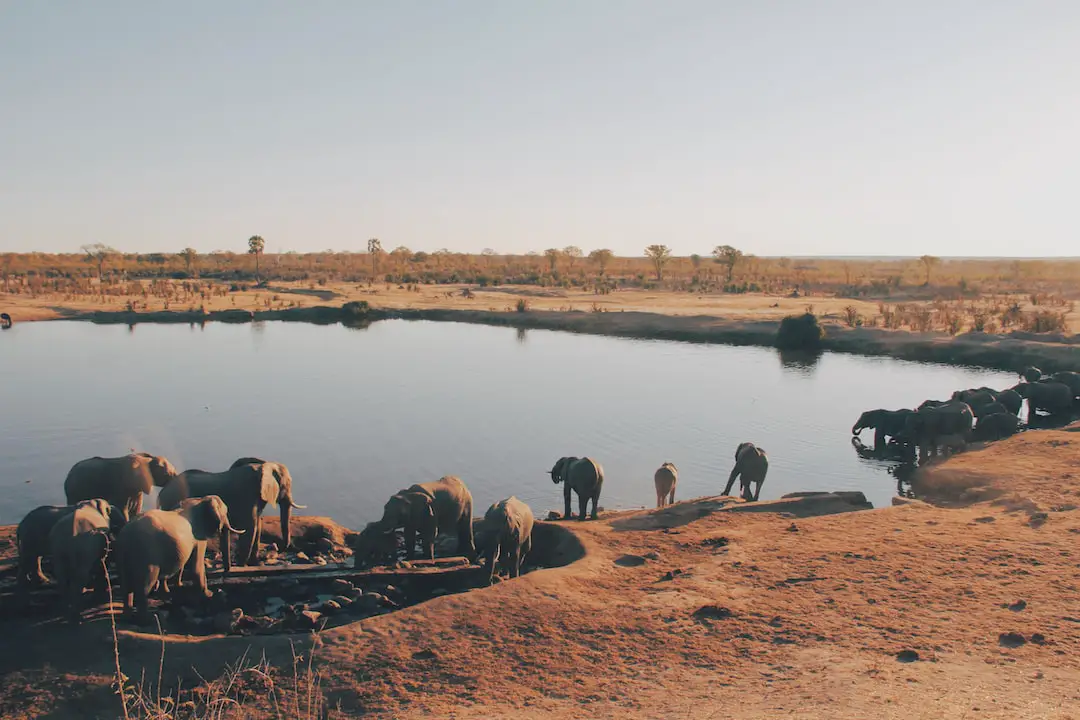
A national monument and burial ground located in Harare, Zimbabwe.
What to see or do: Visitors can explore the site, which is home to a number of grand monuments and memorials honoring Zimbabwe’s national heroes and prominent figures.
The impressive architecture and design of the complex is also worth admiring.
Don’t miss: The Tomb of the Unknown Soldier and the statue of the three guerrilla fighters are two of the most significant landmarks on the site.
The overall ambiance and serene environment is something not to be missed.
Insider travel tips: Visitors should dress conservatively as a sign of respect, and photography is not allowed inside the main monuments.
It is also recommended to visit with a tour guide in order to fully understand the significance and history of the site.
16. Cecil Square
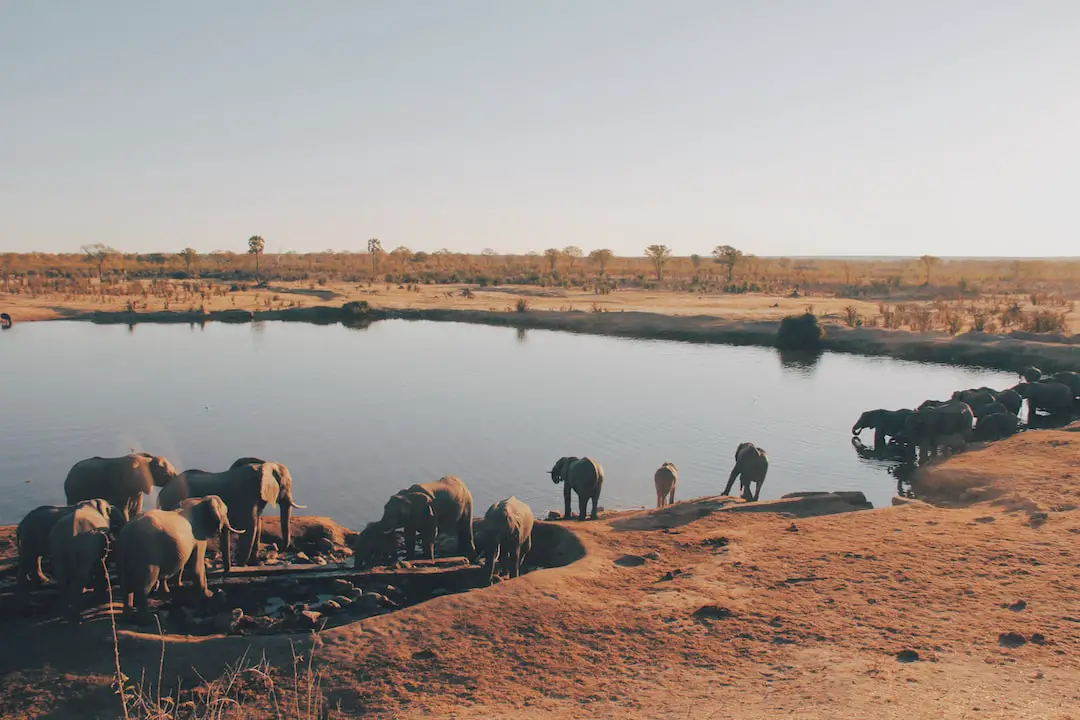
Cecil Square is a historic public square located in Margate, Kent, England.
What to see or do: The square is surrounded by impressive Victorian and Georgian buildings and features several ornate fountains and beautifully landscaped gardens. Stroll around the square and take in the historic architecture and tranquil gardens.
Don’t miss: The bronze statue of Prince Albert, located in the center of the square, is a must-see. It was erected in 1863 as a tribute to the husband of Queen Victoria, who had visited Margate several times.
Insider travel tips: Visit the square on a sunny day and bring a picnic to enjoy in the serene gardens.
It’s also worth taking a short stroll to the nearby Old Town, a charming area with independent shops, cafes, and galleries.
17. Mazvikadei Dam
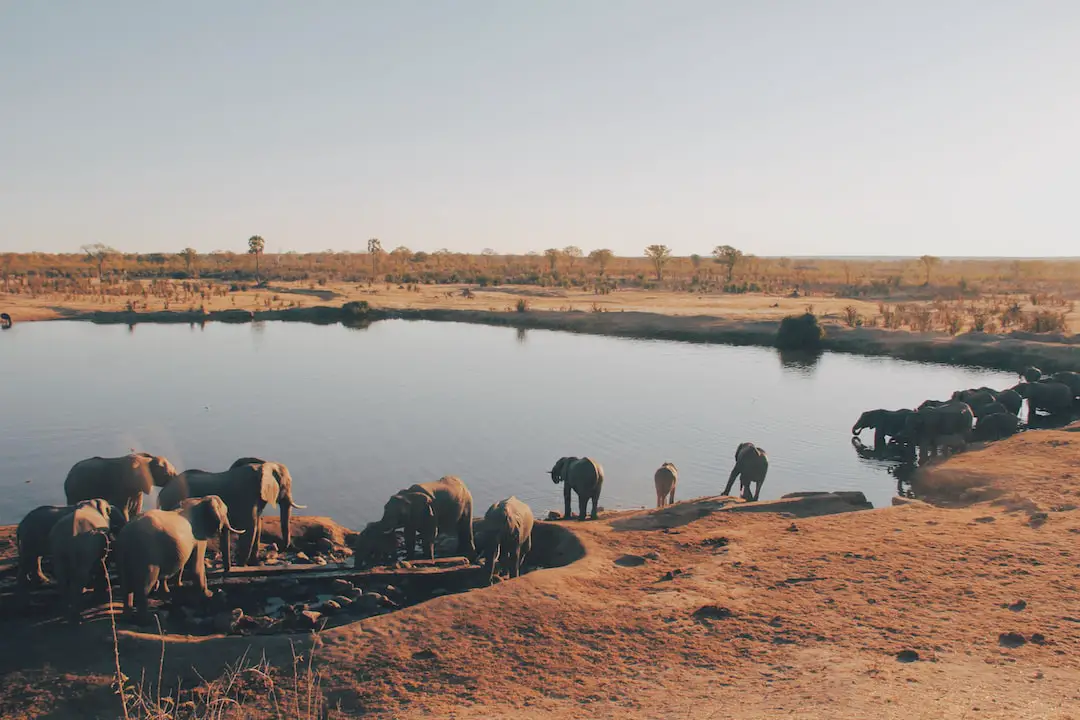
Mazvikadei Dam is an artificial lake located in Zimbabwe, about 78 km west of Harare.
What to see or do: You can enjoy a wide range of water sports and activities such as fishing, boating, kayaking and swimming. The scenic surroundings are perfect for picnics, camping and hiking.
Don’t miss: The Mazvikadei Resort and lodges offer comfortable accommodation that overlooks the lake and surrounding mountains. The resort also has a restaurant and bar for visitors to relax and enjoy the beautiful views.
Insider travel tips: – Remember to bring sunscreen, sunglasses and hats as it can get hot during the day.
18. Ruwa Sculpture Park
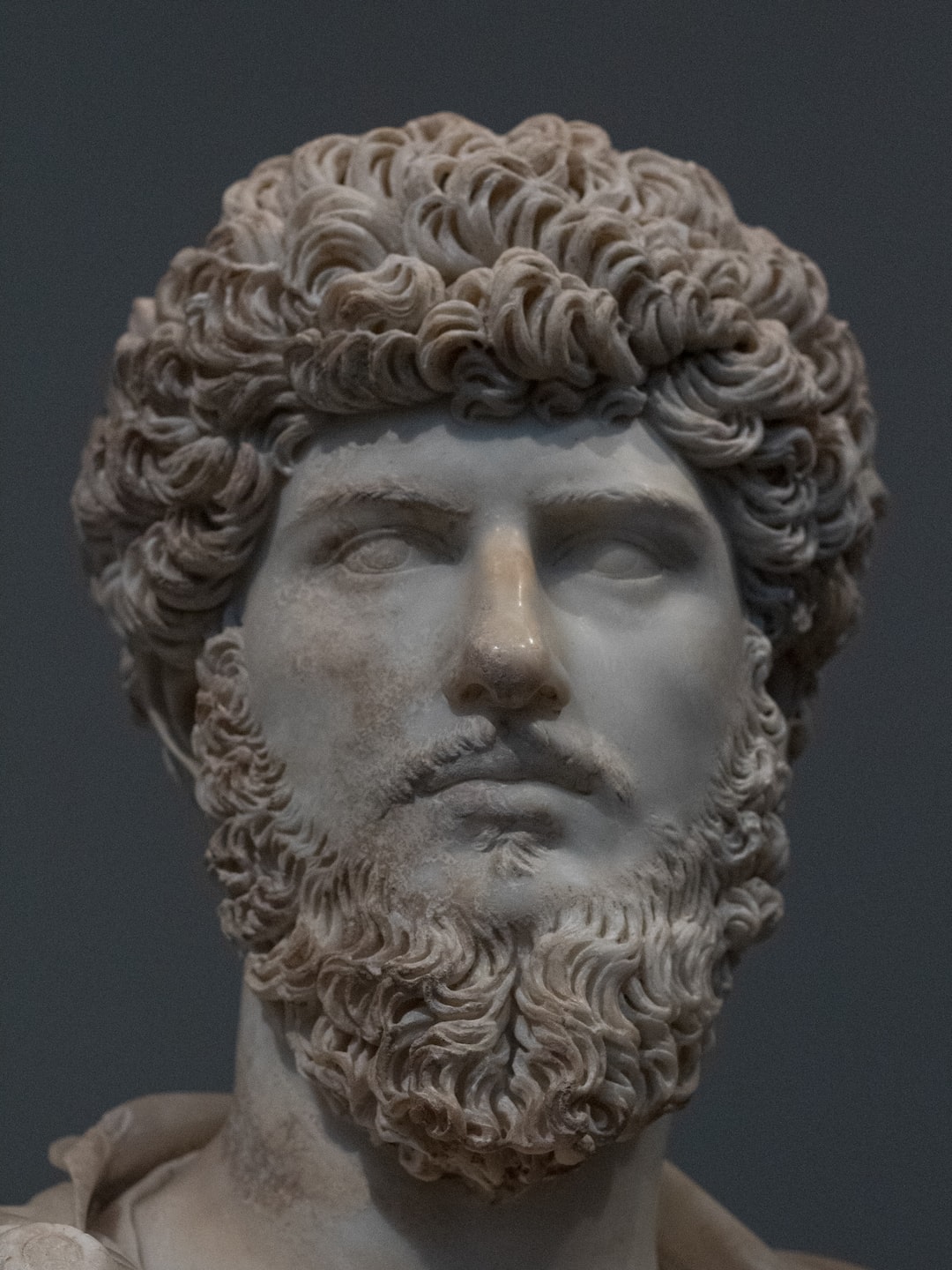
Ruwa Sculpture Park is a sculpture garden located in the outskirts of Harare, Zimbabwe.
What to see or do: Visitors can explore the garden and admire over 300 stone sculptures crafted by local artists. The pieces range from traditional to contemporary styles and vary in size and theme.
Don’t miss: Be sure to check out the imposing “Unity” sculpture by renowned Zimbabwean artist Dominic Benhura, which stands at over 20 feet tall.
Insider travel tips: – Wear comfortable shoes as the park covers a large area.
19. Domboshava Rocks
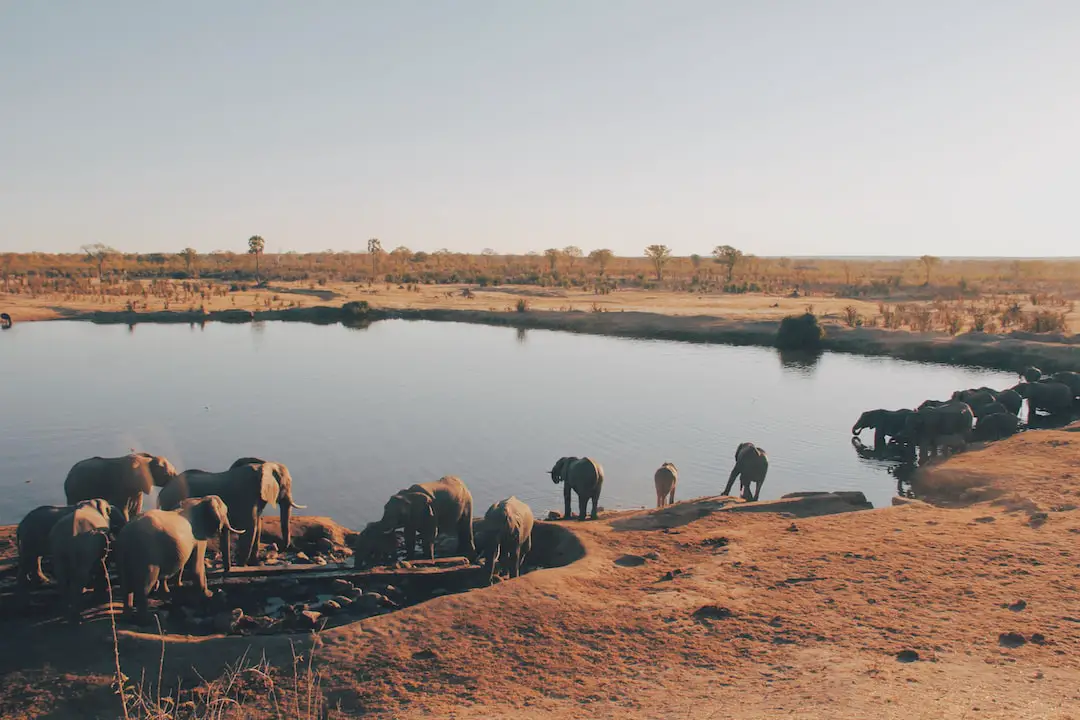
A collection of granite rock formations in Zimbabwe that hold significant religious and cultural importance.
What to see or do: Visitors can explore the various rock formations, caves and crevices while taking in the natural beauty of the landscape. A visit to Domboshava Rocks can also provide great opportunities for hiking, bird-watching, picnicking and photography.
Don’t miss: The rock art and paintings found on the rock surfaces which are believed to be over 1000 years old. Additionally, be sure to check out Mawere, a balancing rock formation that has become a popular landmark.
Insider travel tips: Visitors are encouraged to bring a camera, sunscreen and good hiking shoes, as the terrain can be rocky and uneven. It’s also advisable to bring along a guide who can provide more information on the area’s history and significance.
20. Pioneer Column Statue
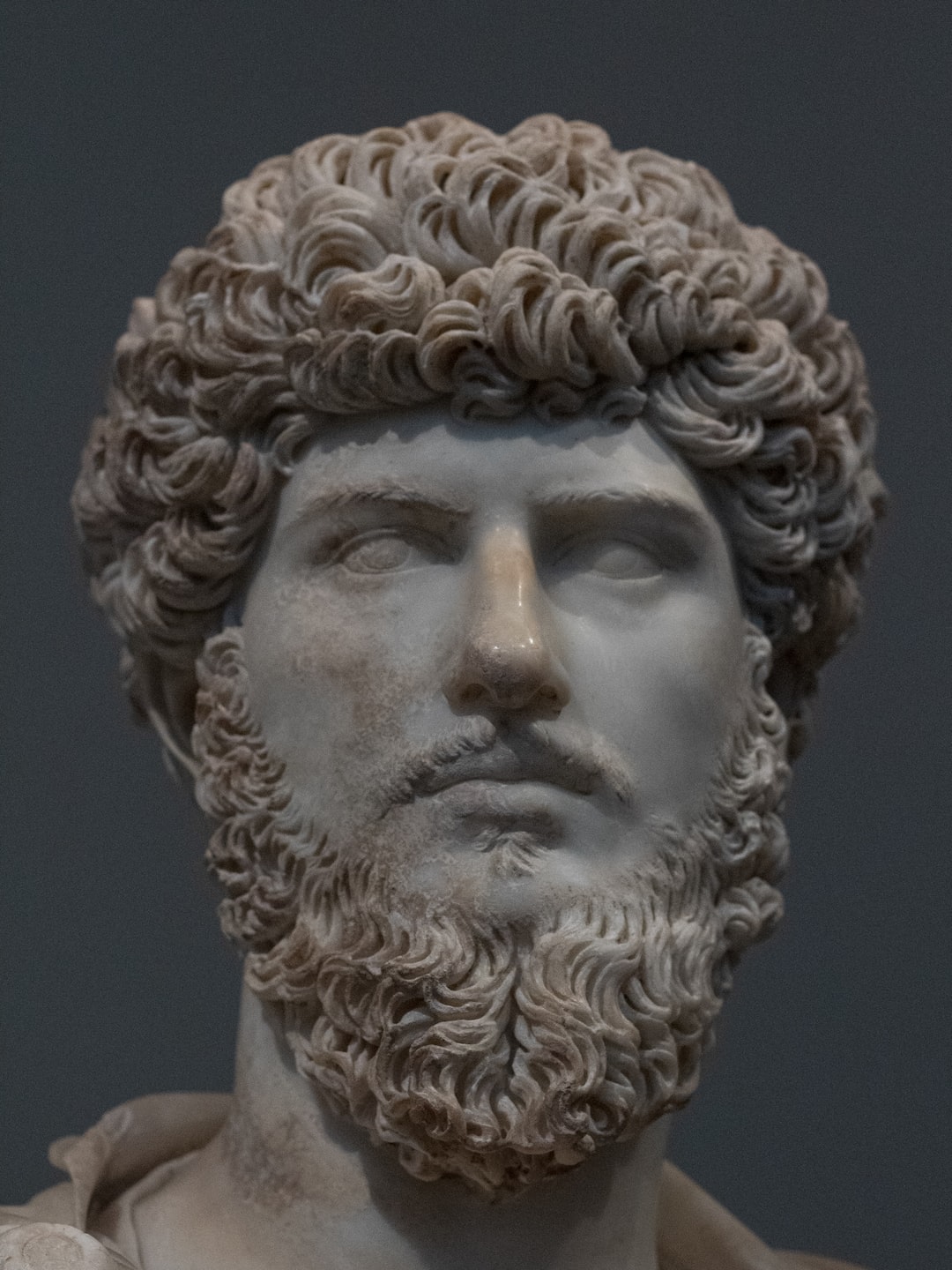
A statue located in Harare, Zimbabwe, commemorating the Pioneer Column, a group of European settlers who founded the city in 1890.
What to see or do: Admire the bronze statue of a European man and woman on horseback, both dressed in colonial attire, which sits atop a stone pedestal.
Take in the views of the surrounding city from the statue’s location on the intersection of Samora Machel Avenue and Speke Avenue.
Don’t miss: The controversial history surrounding the statue, as it has been the subject of debate and protests due to its association with colonialism and the oppression of local Zimbabweans.
Insider travel tips: Visit the statue early in the morning or around sunset for the best lighting and photo opportunities. Be respectful of local viewpoints and the statue’s complicated history.
21. Queen Victoria Memorial Library

Queen Victoria Memorial Library is a public library situated in Buckingham Palace Road, London.
What to see or do: The library’s collection includes books, newspapers, magazines, DVDs, and audiobooks, all available for borrowing. Visitors can also enjoy free Wi-Fi access and public computers.
Don’t miss: Don’t miss the library’s impressive collection of rare books and manuscripts, housed in a temperature-controlled room.
Insider travel tips: The library is open to the public, and there is no need for a library card to access its resources. However, visitors need to bring a government-issued photo ID as proof of identity.
The library is closed on Sundays.
22. Zimbabwe Museum of Human Sciences
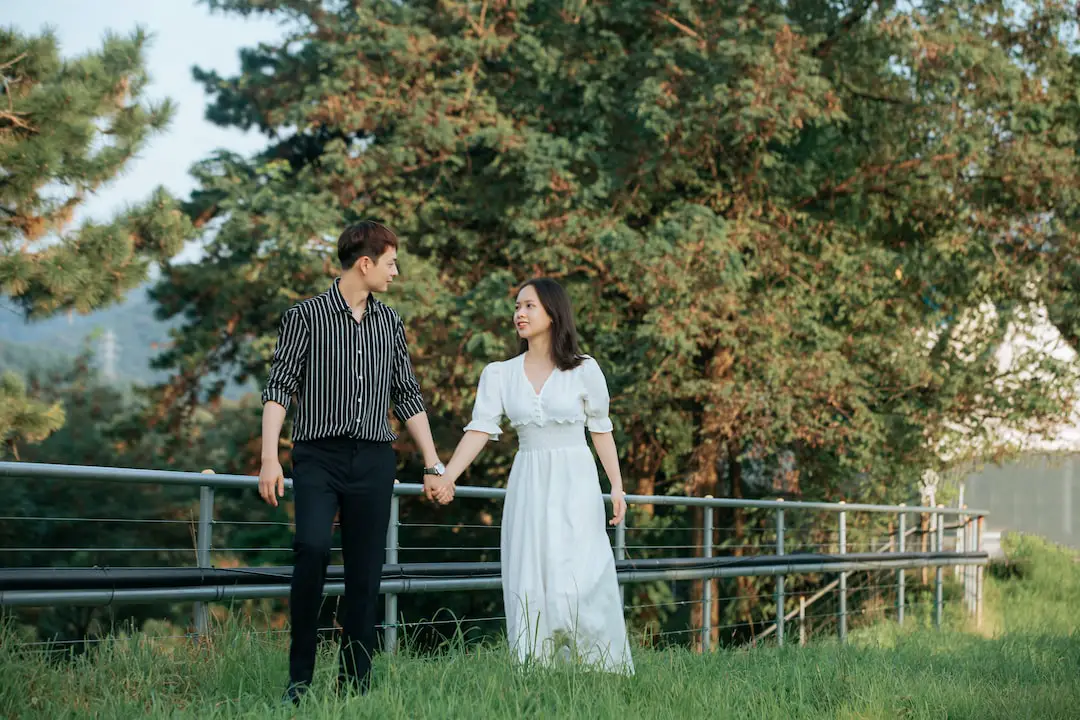
The Zimbabwe Museum of Human Sciences is a national museum located in the capital city of Harare. It primarily focuses on the history, culture and heritage of Zimbabwe and its people.
What to see or do: The museum houses several fascinating exhibits, including displays on Zimbabwean archaeology, ethnography, and natural history. Visitors can learn about the country’s geology, flora and fauna, ancient civilizations, and indigenous cultures.
The museum also has an impressive collection of African art and pottery.
Don’t miss: One of the highlights of the museum is the display of a reconstructed “Great Zimbabwe” house, which is a replica of a traditional Zimbabwean dwelling from the medieval period.
Another must-see is the interactive exhibit on the traditional rain-making ceremonies of the Shona people, one of the main ethnic groups in Zimbabwe.
Insider travel tips: – The museum is closed on Mondays, so plan your visit accordingly.
23. Mutare Museum
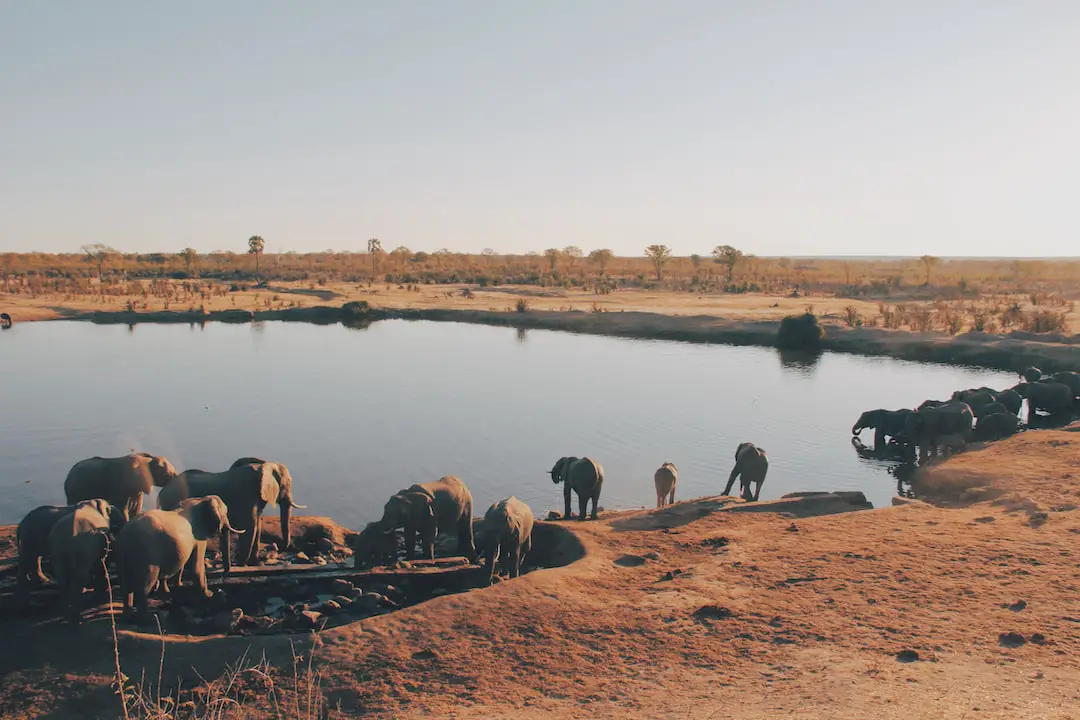
Mutare Museum is a museum located in Mutare, Zimbabwe. It is dedicated to Zimbabwean history.
What to see or do: The museum has a rich collection of archaeological and ethnographic artefacts, as well as historical and natural history displays.
Visitors can learn about the cultural heritage of Zimbabwe through interactive displays, including exhibits on the Shona, Ndebele, and Tonga people.
The museum also has a library and research facilities.
Don’t miss: One of the standout exhibits is the display of Zimbabwe’s colonial history, showing the impact of British rule on the country.
There are also displays of traditional music, crafts, and agriculture.
Insider travel tips: Visitors should plan to spend at least a few hours exploring the museum and its grounds. It’s best to visit in the morning or late afternoon to avoid the midday heat.
The museum also hosts regular events, such as lectures and workshops, which are worth checking out if you’re interested in Zimbabwean history and culture.
24. Harare Railway Station
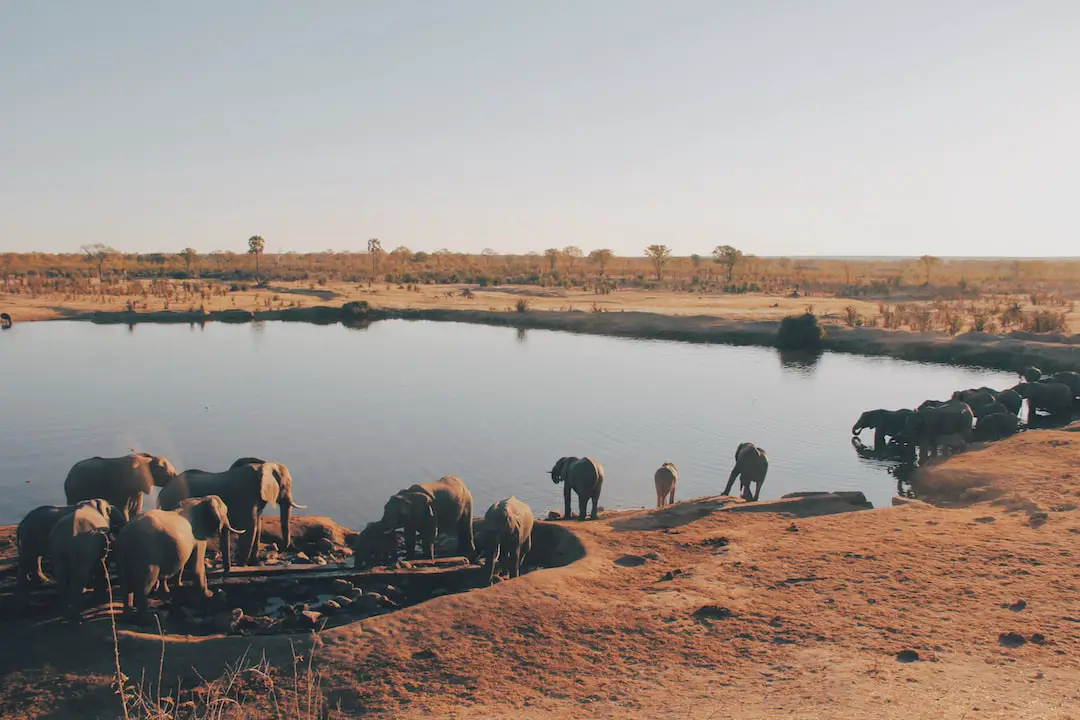
Harare Railway Station is a historically-significant transportation hub located in Zimbabwe’s capital city.
What to see or do: Visitors can explore the station’s colonial architecture and take photos in front of the impressive clock tower. The station also offers train rides to other cities in Zimbabwe such as Bulawayo and Mutare.
Don’t miss: The opportunity to witness the old steam engine trains in action and take a unique ride through the countryside.
Insider travel tips: Be sure to arrive early before your train departs, as the station can get quite busy. It is also recommended to book your train tickets in advance to ensure availability, especially during peak travel seasons.
25. Matopos Hills
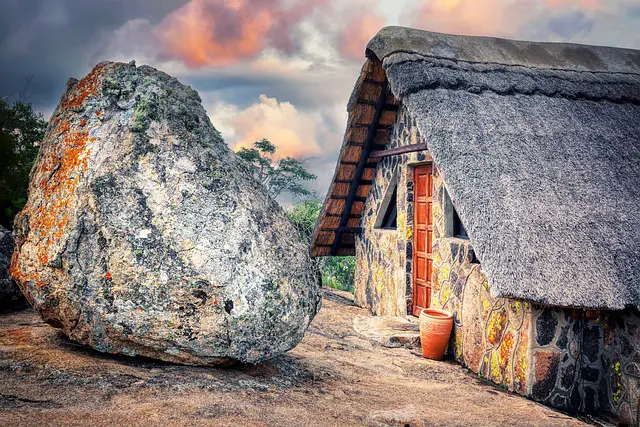
Matopos Hills is a UNESCO World Heritage site located in southwestern Zimbabwe, known for its unique landscape of balancing rock formations, cave systems, and rare species of flora and fauna.
What to see or do:
Don’t miss:
Insider travel tips:
26. Norton Tower
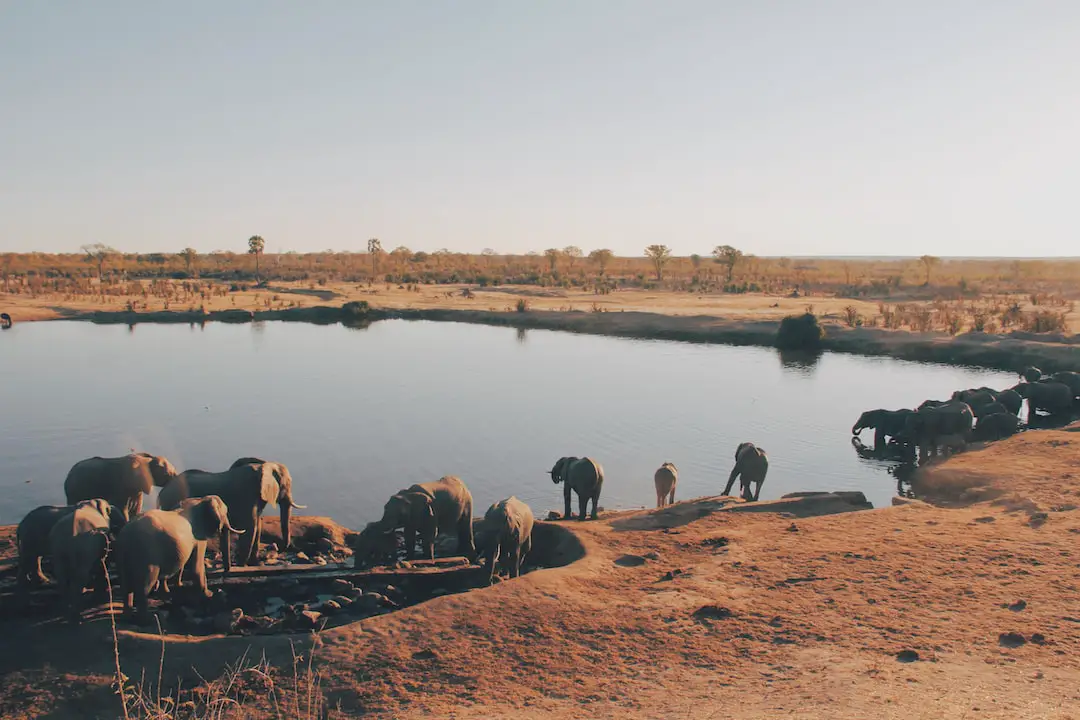
Norton Tower is a 16th-century stone tower located near the village of Norton in West Yorkshire, England.
What to see or do: Visitors can climb up the narrow spiral staircase to the top of the tower for stunning views of the surrounding countryside.
The tower itself is a unique example of Tudor architecture and is a great spot for history enthusiasts.
Don’t miss: Don’t miss the chance to take a photo at the top of the tower. The views are truly breathtaking, and it’s a great opportunity to capture the moment.
Insider travel tips: Make sure to wear comfortable shoes as the staircase can be quite challenging to climb. Also, be aware that the tower is surrounded by private property, so be respectful of the nearby landowners.
Additionally, be sure to check the opening times before you go, as the tower is only open on certain days of the year.
27. Victoria Falls Bridge
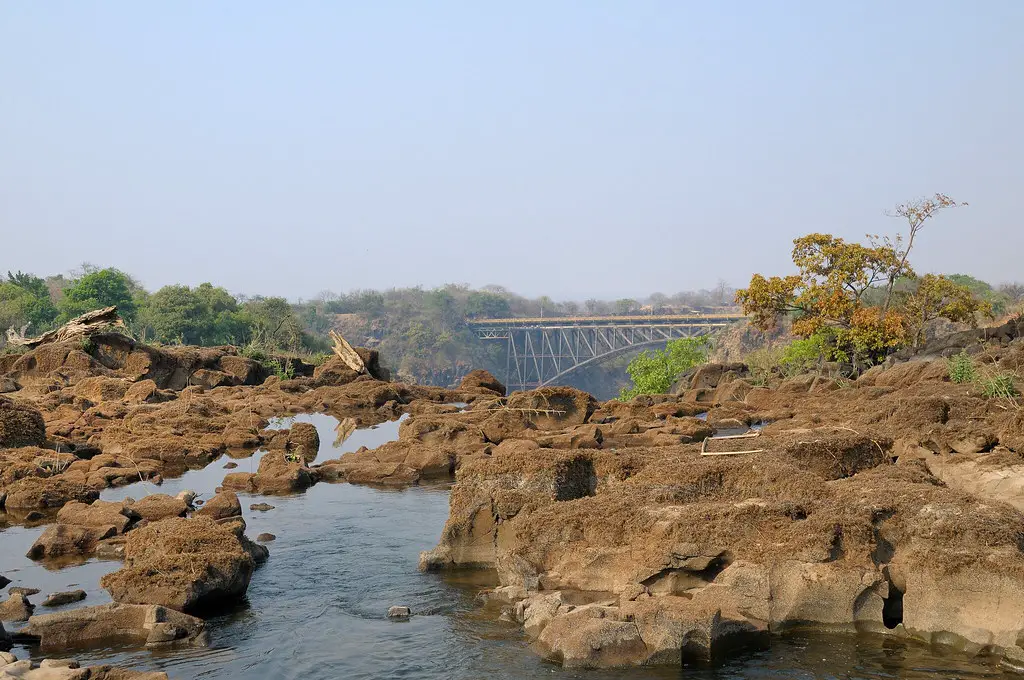
The Victoria Falls Bridge is a historic railway bridge that crosses over the Zambezi River and connects Zambia and Zimbabwe.
What to see or do: Visitors can walk across the bridge and enjoy stunning views of the Victoria Falls, the Batoka Gorge and the Zambezi River.
There are also activities available such as bungee jumping, zip-lining and bridge swinging for the thrill seekers.
Don’t miss: Watching the sunset from the bridge is a must-do experience. The iconic view of the sun setting behind the Victoria Falls and the Batoka Gorge is simply breathtaking.
Insider travel tips: For the best photo opportunities, visit the bridge early morning or late afternoon when the light is more favorable. And be sure to bring sunscreen and a hat as there is little shade on the bridge.
If you’re interested in bridge activities, pre-booking is recommended to secure a spot and avoid long wait times.
28. University of Zimbabwe

The University of Zimbabwe is a public university located in Harare, Zimbabwe. It was established in 1952 as the University College of Rhodesia and Nyasaland and became independent in 1980.
What to see or do: Visitors can explore the campus grounds and visit the main library.
The university is also home to the National Herbarium and Botanic Garden, which is open to the public and features a diverse collection of plants and trees.
Don’t miss: The Great Hall, which is the largest lecture hall on campus, is an iconic building that is worth a visit. It has hosted many important events, including graduations, speeches, and concerts.
Insider travel tips: Visitors should be aware that the university is a busy academic institution, so it is best to avoid visiting during peak class hours.
It is also important to respect the academic environment by refraining from making excessive noise or disturbing students who are studying.
29. Heroes Park Cemetery
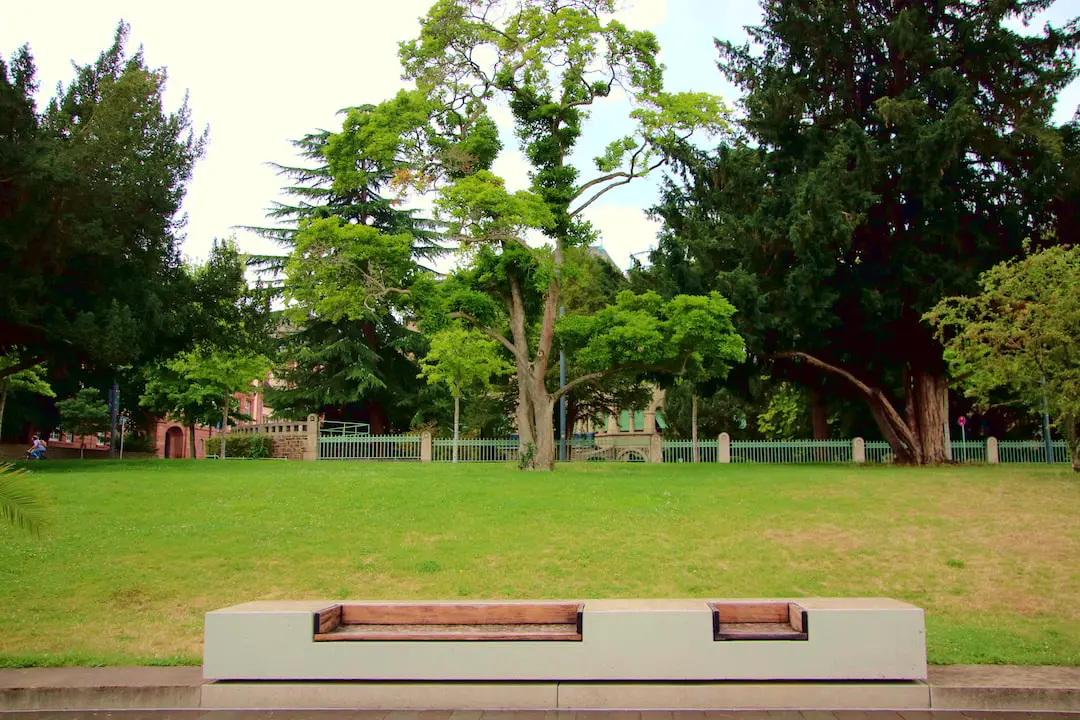
Heroes Park Cemetery is a national cemetery in Lusaka, Zambia where many of the country’s important figures and heroes are buried.
What to see or do: Visitors can pay their respects to the final resting places of famous Zambians such as presidents, freedom fighters, and other important figures.
The cemetery also has a monument dedicated to the unknown soldiers who died in World War I and World War II.
Don’t miss: Don’t miss the tomb of Kenneth Kaunda, the first president of Zambia and the leader of the country’s independence movement. His tomb is located near the entrance of the cemetery and is easy to spot.
Insider travel tips: – Make sure to dress respectfully when visiting Heroes Park Cemetery. This includes wearing modest clothing that covers your shoulders and knees.
💪 Support independent web, support us:
